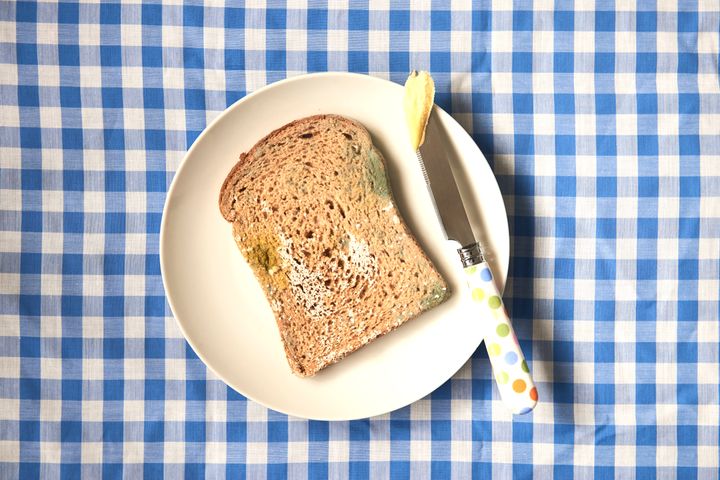
Look, no-one wants to throw away food unnecessarily.
Waste is not good for the planet, our supermarkets or our wallets.
But, there are times when it’s better to be safe than sorry – and this is one of those times.
So when you spot fuzzy patches on your bread, remember that these are actually colonies of spores.
That’s how the fungus reproduces and it will probably give the bread a pretty weird flavour, at the very least.
Several different types of fungus can grow on bread and it’s very difficult (near impossible) to know what kind is on your wholegrain, white loaf or ciabatta – but it’s probably not the same as the type that grows on blue cheese.
But it’s not just the taste which is a problem.
So why is mould on bread dangerous?
What you see of the fungus is just the tip of the iceberg.
Its microscopic roots will spread quickly through the porous bread, even if you can’t see it.
So, if one part of the bread is mouldy, it probably all is, according to the Food Standards Agency (FSA).
And this mould can also produce harmful and invisible poisons called mycotoxins which spread quickly and cause digestive upset (to animals as well).
Try not to breathe in the spores either, as you could develop respiratory issues or harmful infections – and those with allergies could have a reaction.
Mould expert Dr Patrick Hickey told the BBC: “As a general rule, a mould colony of 1cm in diameter on the surface has also penetrated 1cm deep into the food.”
The Food Safety and Inspection Service of the US Department of Agriculture also advises you to throw the entire loaf of bread if it develops mould.
How do you stop bread going mouldy?
Bread has a shelf-life of three to four days without preservatives, according to Healthline.com, which is why bakers often put calcium or lactic acid bacteria in it to slow down mould growth.
Vinegar and spices like cinnamon and cloves can deter it too, but risk changing the flavour.
But, you can try to prolong it by keeping it dry, covering it and freezing it. Mould normally occurs in the right conditions, like warm and humid kitchens.
Most mould can’t survive being baked but spores are usually picked up after the dough is baked into bread.